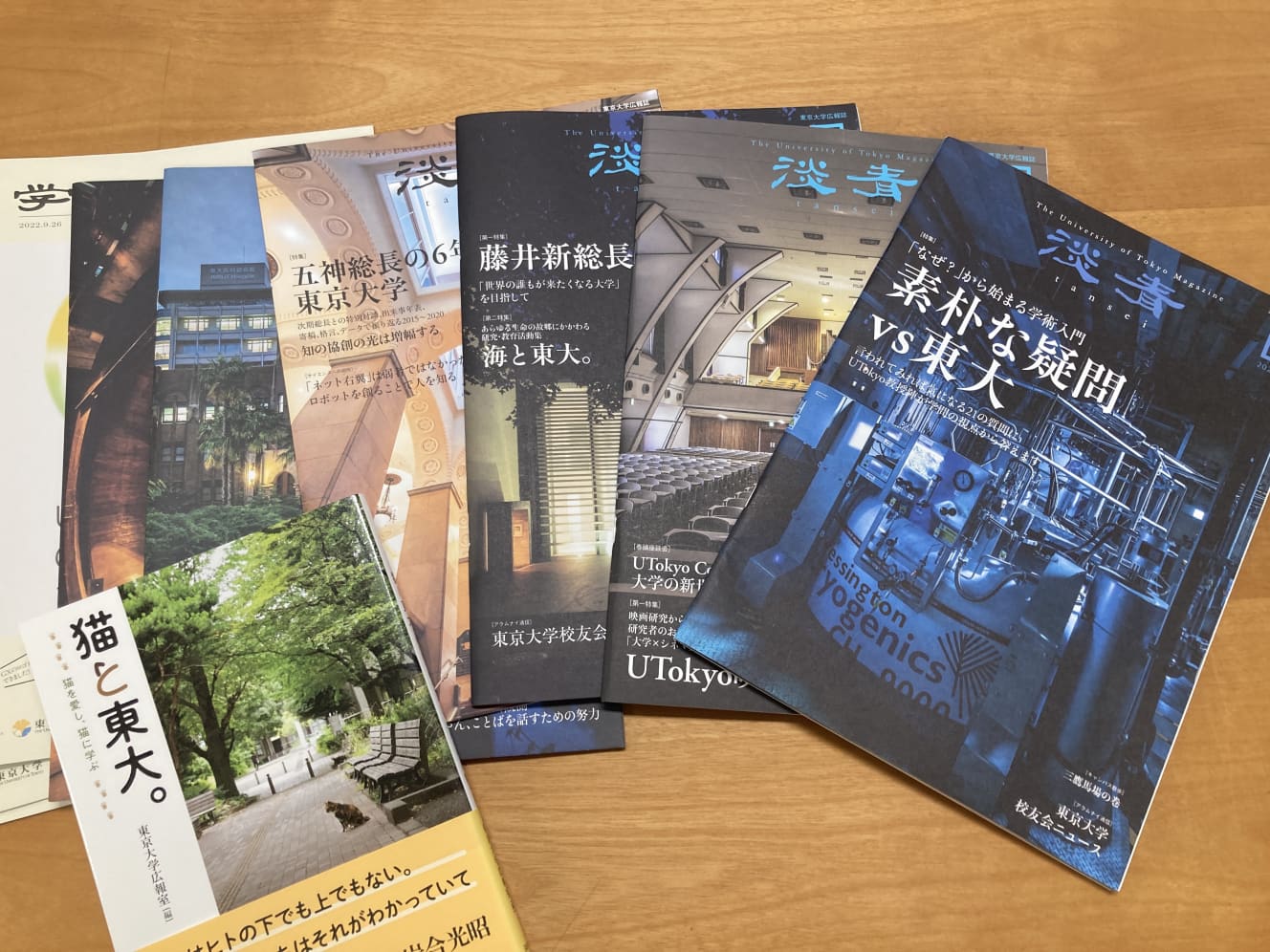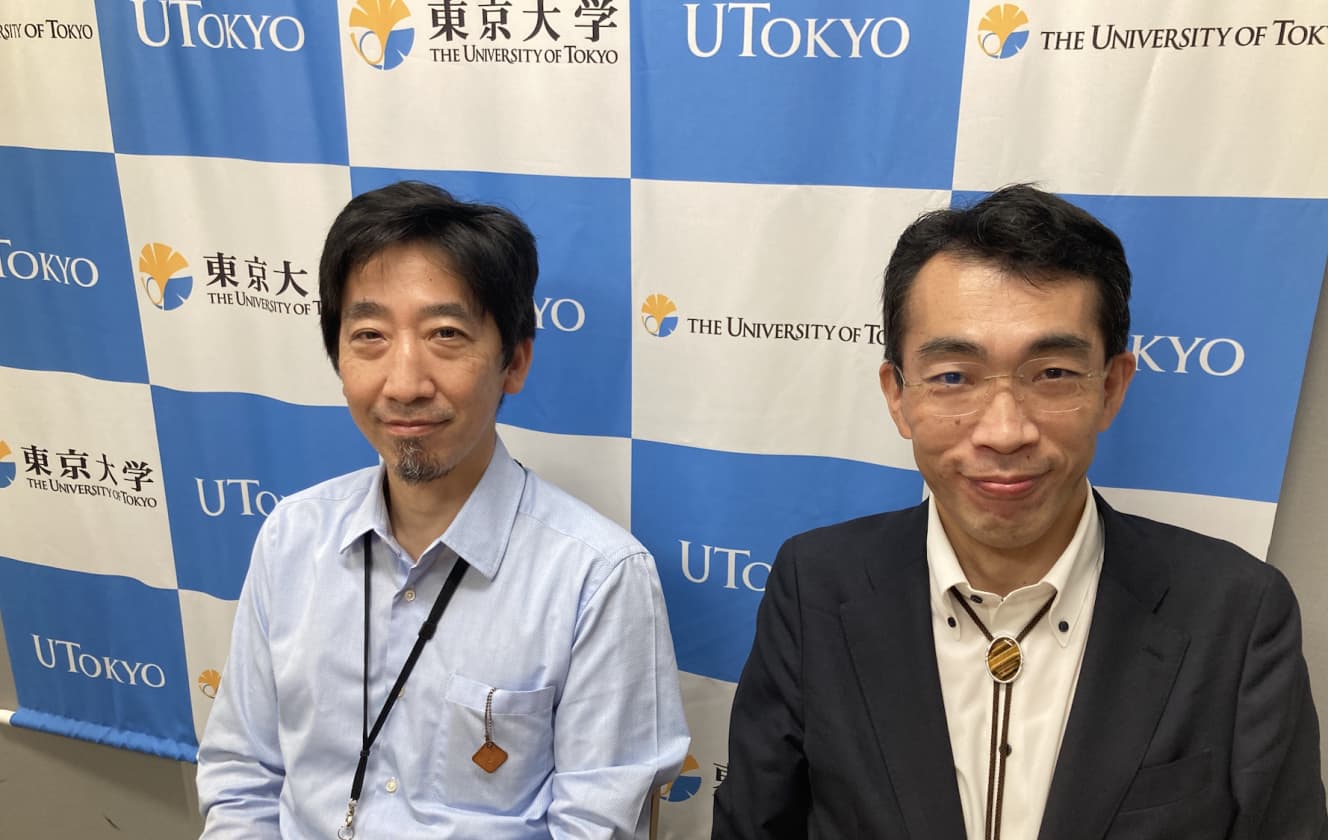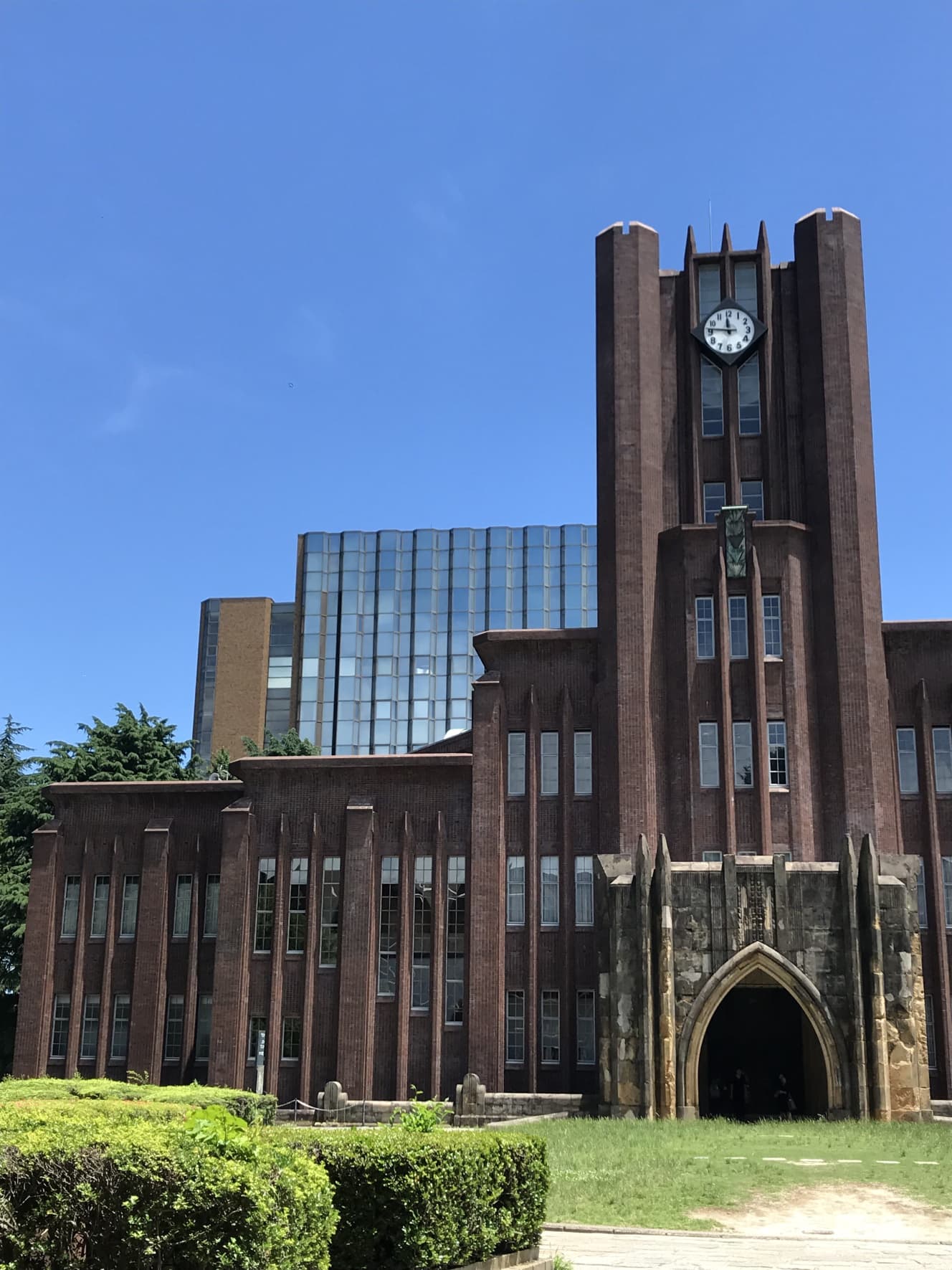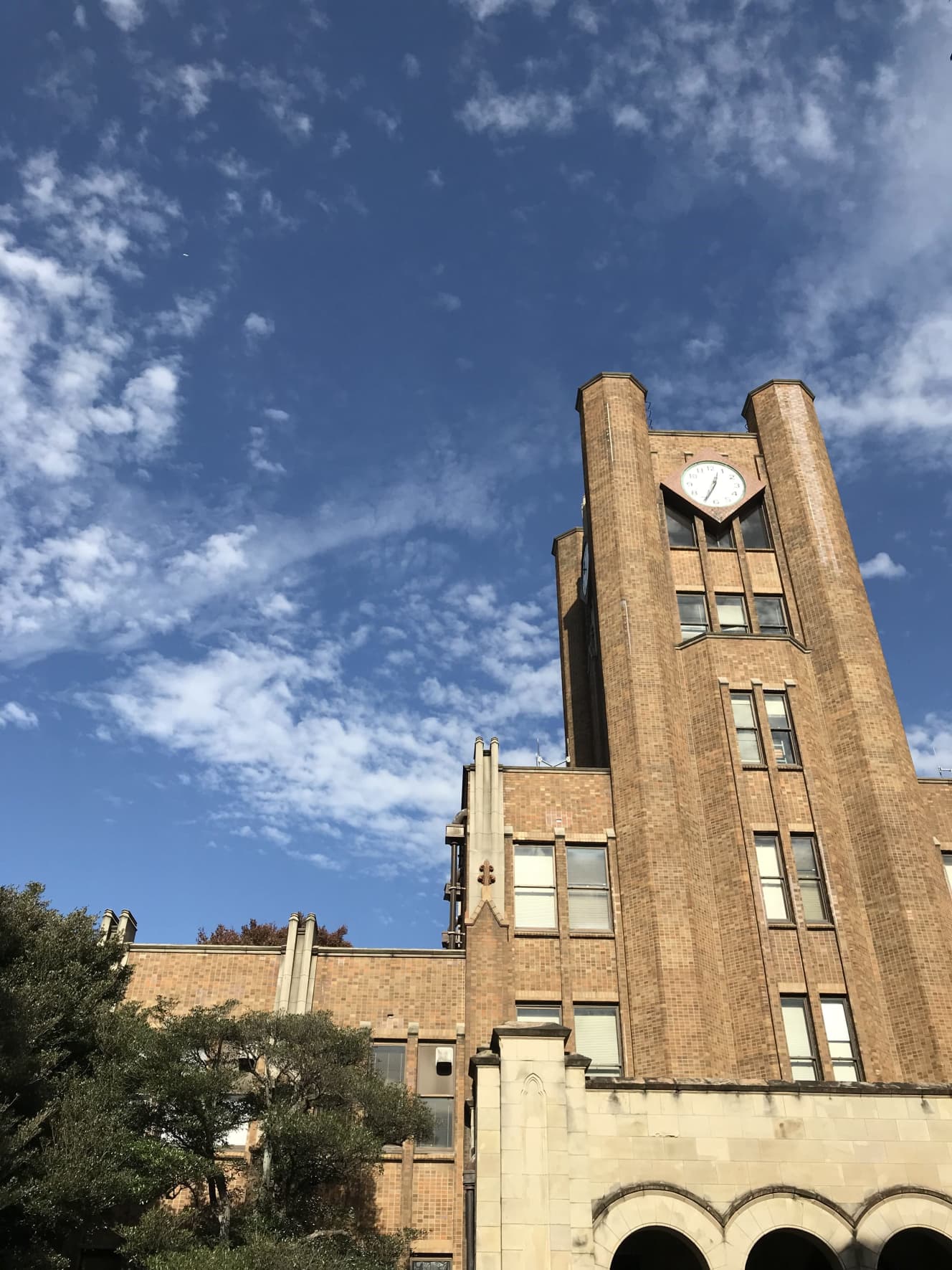A University of Tokyo professor reveals the secret behind the Internet sensation, “The University of Tokyo Public Relations Magazine!”
Why does the good time go by so fast? Why is the McDonald's menu so hard to read? What are the answers to "Why is it so hard to see the menu at McDonald's?

A simple question vs. the University of Tokyo.
Why does the good time go by so fast? Why do we want to sleep when we are tired?
The University of Tokyo’s public relations magazine “Tansei” No. 45, in which 21 questions and answers unfold in an unlimited number of directions, is the talk of the town.
The answer to the question, “Why does happy time go by so quickly? When we are tired, we feel sleepy because calcium ions enter our nerve cells. The “questions” are ones that anyone has felt before, but the answers are full of surprises. Why did you come up with this project? I went to the Public Relations Office of the University of Tokyo with my “question.
It is the duty of researchers to return knowledge to society.
There is a lot of excellent research being conducted at the university. I have always felt that I wanted people to support that. I thought, “In order to get people interested, why not make an entry point to something that everyone is wondering about?”
Jiro Takai of the Public Relations Division, the planner of the project, said this, while Kiyohiko Sugiyama, head of the Public Relations Office and professor of history at the Graduate School of Arts and Sciences and the Faculty of Liberal Arts, said, “I wanted to give back to society by giving back to my own research.
One of the duties of a researcher is to give back to society what he or she is researching. While teaching students at universities, it is the duty of researchers to disseminate their research results through various media and to be of service to society. In order for people to understand this attitude, I thought this kind of question-and-answer format would be a good way to spread the word about what is being done at our university.”
The “questions” were submitted by about 10 faculty members of the Public Relations Magazine Subcommittee. The number of “questions” gathered was 128.
We got a lot of interesting questions. The questions themselves were simple, so the editorial members consulted with each other while thinking about what angle to take and how to make the answers cross-cutting within the university and not biased toward a single department. 21 We narrowed it down to 21 questions. Deciding what questions to include was a fun process,” said Dr. Sugiyama.
Sometimes the answer is “I don’t know.
The questions were chosen so that they would be cross-cutting within the university, and they included questions such as “Why do gray hairs appear as we get older? Why are there dominant and non-dominant hands? Why doesn’t the world have more democracies? The questions are very diverse. Although he answers them in an easy-to-read manner for the general public, there are still some answers that are too difficult to understand.
Did Dr. Sugiyama have any “unknowns”?
Almost nothing I don’t know(laughs). I think it is the same for both of us. Each researcher’s specialty is so deep that it is impossible for both of us to be at the level of ”
For example, “Why is contemporary art so difficult? For example, “Why is contemporary art so difficult? The answer to this question is, “Because contemporary art elicits questions, not answers.
This question was answered by Associate Professor Hiromi Matsui of the Institute for Arts and Culture. Here. 20th A replica of Marcel Duchamp, who is said to have had the greatest influence on art in the 20th century, is introduced here. In fact, there are only a few Duchamp replicas in the world, and they are in the Komaba Museum on the Komaba Campus of the University of Tokyo. We were able to introduce this at the same time.
Another highlight of this feature is the introduction of various experimental facilities at the University of Tokyo. In the section entitled “Why Does My Recorded Voice Sound Strange? the feature introduces an acoustic laboratory that can produce sound in three dimensions.
I really wanted to introduce this laboratory as well,” said Takai.
When you chose “Questions,” did you have a specific teacher in mind for the interview?
In some cases I did, and in other cases I searched and searched. This is the teacher! I asked for an answer, but was told ‘I don’t know the answer,'” said Takai.
(Mr. Takai) “So there are things that even the teachers at the University of Tokyo don’t know.
Some places read “Nihonbashi” as “Nihonbashi” and some areas read “Nihonbashi” as “Nipponbashi. I wanted to know why that was, but he said, ‘I can only say I don’t know.
Instead, in discussing the matter with the teacher, I came up with the question, “Why is the order ‘Aiueo/Akasana’? The answer was, “Esoteric Buddhist monks are not taught to read in that order. The answer was ‘because esoteric Buddhist monks studied Sanskrit.
I had no idea that “Aiueo” had such a deep background. Each answer is so complete that a whole book could be written on its own.
The questions may be simple, but the answers are not always simple. The gap between the two is interesting, and I think that’s why people were interested in it. It was a happy miscalculation,” said Dr. Sugiyama.
Japan has the “depth of knowledge” to answer any question
The “simple questions” are all things that we might feel in our daily lives, but they cover a wide range of topics, including aging, food, plants, daily necessities, economics, politics, and language issues. As you would expect from the University of Tokyo, they can handle any kind of question.
The University of Tokyo has only undergraduate 10 and the graduate school is 15 There are also countless research institutes and other organizations. Furthermore, in the College of Liberal Arts, for example, some are doing physics, some are doing political science, some are doing genomics, and some are doing French literature. Some are working on genomics, others on French literature. Right now, the University of Tokyo has 1300 If we include associate professors, assistant professors, etc., the total number of professors at the University of Tokyo is 4000 If you include associate professors, assistant professors, etc., there are 4000 faculty members, in other words, researchers.
However, the University of Tokyo covers only a very small number of academic fields. The “breadth of knowledge” is expanding at a tremendous rate. For example, when there were no computers, there were naturally no research fields related to computers. On the other hand, the classics and Greek philosophy, for example, are fields that have been around for a long time and will not disappear in the future. Therefore, the number of fields of study will continue to increase. The field of study is expanding. The University of Tokyo alone cannot cover them all,” said Dr. Sugiyama.
(Dr. Sugiyama) Does that mean that no one can answer to fields that cannot be covered by the University of Tokyo?
No, that is not true. If you ask any researcher at any university in Japan, whether in the sciences or the humanities, you will surely get an answer to any question you have. I believe that is Japan’s national strength. For example, whether you find Aztec or Mayan ruins, or dinosaur tracks on the Silk Road, there is always an expert somewhere. Japan is one of the few countries that have such a broad base of knowledge.
Japan is one of the few countries that has such a broad base of knowledge. This is one of Japan’s strengths, according to Dr. Sugiyama.
With the University of Tokyo as one of its pillars, Japan’s universities as a whole have amassed a thick pool of knowledge. I think this is a very cultural strength.
Dr. Sugiyama quietly and emphatically states that the existence of experts who can answer “simple questions” in various fields is Japan’s strength.
This special feature was not intended to do that, but it did result in showing a glimpse of such “depth of knowledge. And I would be happy if people would pay attention to our university as a frontline of research and education, and not just as a ‘goal for entrance examinations.
The University of Tokyo is home to 4,000 researchers, each of whom is working in his or her own specialized field. The “Simple Question vs. the University of Tokyo” was one of the points of contact between cutting-edge research and its return to society. I am excited by the deep world of this project and feel somewhat cheerful about it.
The University of Tokyo’s PR magazine “Awa Sei” No. 45
The magazine is sent to members of the Alumni Association of the University of Tokyo, and is also distributed free of charge on the university campus and at related facilities. Issue 45,” which is no longer in stock due to its popularity, can be viewed in PDF format.




Interview and text by: Izumi Nakagawa